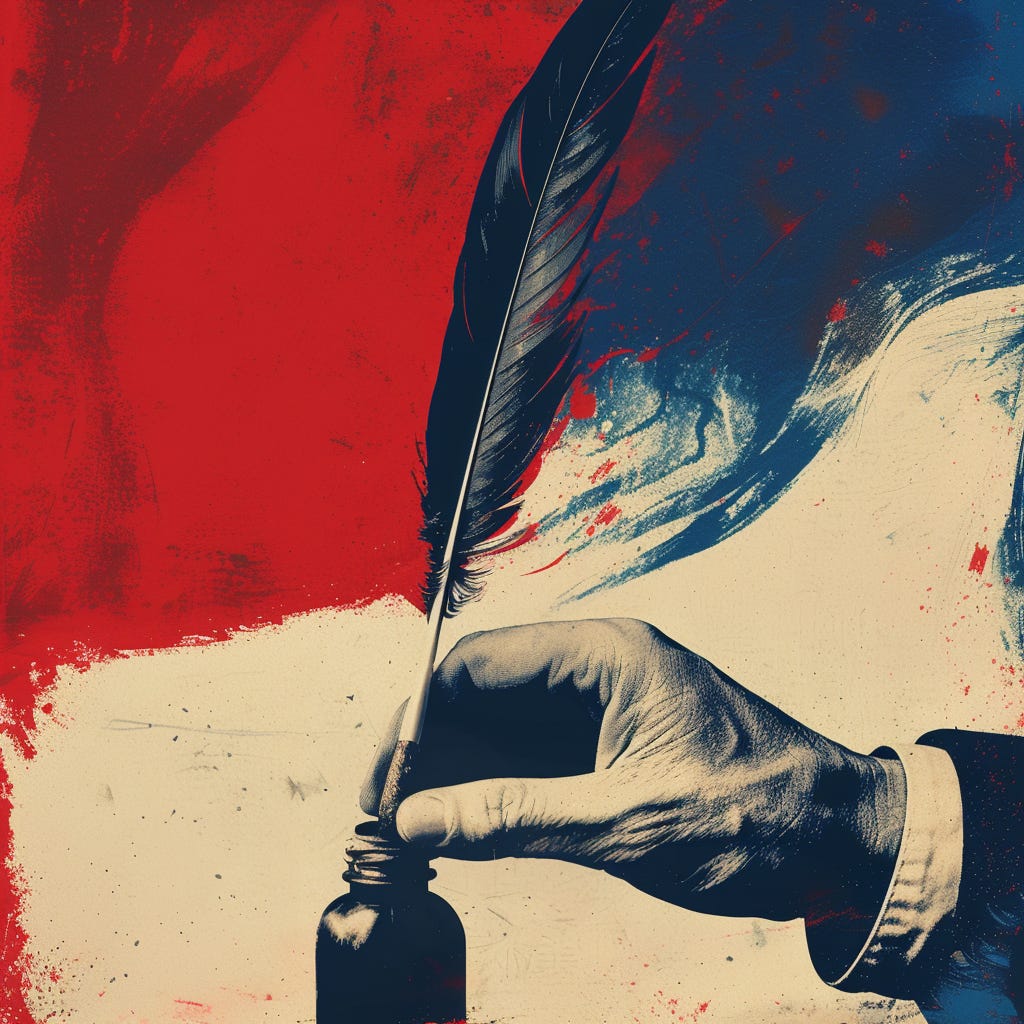AI Couldn't Have Written the Declaration, part 1
It takes a human to craft a blueprint for freedom.
ChatGPT is Donkey Kong
Saying “AI can’t. . .” invites pushback right away.
“Just wait,” comes the response, “the technology is still in its infancy.”
This is true, and it makes me think of video games. Ponder the distance traveled between Donkey Kong, which came out in 1981, and a modern hit like Fortnite. If ChatGPT-4 is the Donkey Kong of generative AI, we might not even have thought categories for what AI will make possible decades from now.
AI Challenges the Uniqueness of Humans
That makes it all the more important to keep asking: what is it that can only be accomplished by a creature made in the image of God? The list of human-only feats isn’t getting longer:
Decide what to have for dinnerDefeat a world chess championCarpet-bomb Etsy with throw pillow designsCompose a punchy jazz track(as this AI rendition of Psalm 1 shows)
With each passing day, fewer endeavors remain uniquely human. This is discouraging, to say the least. But the sense that our distinctiveness is eroding could also drive us to press more deeply into the question: What does it mean to bear our Creator’s image?
Answering this could lead in any number of directions. For this post and its follow-up, here’s where I’m headed: It takes a person to craft a transformative blueprint for human dignity and freedom. A bot might crank out passable writing on the subject, maybe even something moving. But 250 years from now no one will be lighting off fireworks to celebrate it.
Which brings us to the Declaration of Independence.
First, take ten minutes or so to read the whole thing, whether for the first time or the 100th.
Then consider how much change it unleashed. Pastor Andrew Wilson sums it up:
Today there are around seven billion people living in countries that purport to be democratic republics.
In 1775, there were none.
In his book Remaking the World: How 1776 Created the Post-Christian West, Wilson also notes:
Even those states that have no intention of functioning as democracies feel the need to pretend that they do. This is so commonplace now that we can forget what an astonishing change it represents.
The Declaration of Independence spurred civilization-shaking change. It was the work of five men, including Thomas Jefferson, John Adams, and Benjamin Franklin. Their effort produced 32 sentences which were penned on a single broadsheet. Rarely in history have so few words done so much for the cause of freedom.
AI Can Only Look in the Rearview Mirror
Obviously AI didn’t exist when the Declaration was written. But even today, AI can’t do what Jefferson and his colleagues did. That’s because while AI is really good at looking in the rearview mirror, it can’t envision a future the way a human can.
Consider the subspecies of AI known as an LLM, or a Large Language Model. The technology first trains by analyzing data sets with an extremely large volume of words. When you use an LLM like ChatGPT, the response you get amounts to a remix of a tiny sliver of the data it has seen. Depending on how you prompt it, the AI might seem like it can imagine a future. But all it can really do is replicate relationships between words that have already been written.
Human writers also draw on existing ideas. The Declaration famously owes two-thirds of “life, liberty, and the pursuit of happiness” to John Locke’s “life, liberty, and property.” But a human author can do more than look backward.
In the second part of this post, I’ll delve into what it means to bear God’s image, and how this relates to the human ability to imagine a future.



